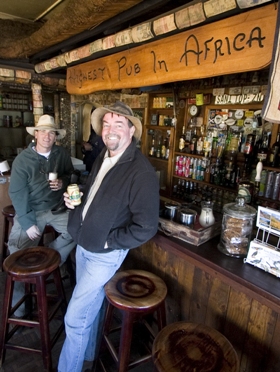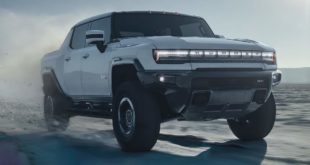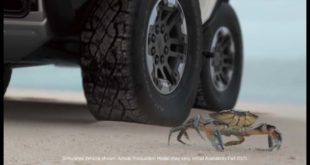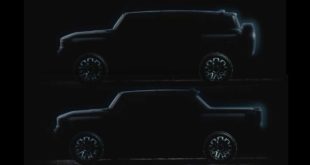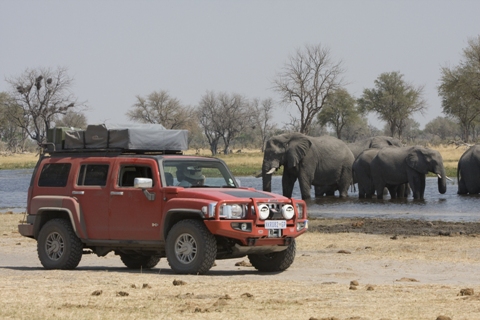
Among other things, Chris Collard enjoys off-roading, photography, and just about anything that gets his adrenalin pumping. Combine those activities and you’ve got the beginning of his voyage across Africa in a specially equipped HUMMER H3. After his journey, we were lucky enough to debrief Chris on his adventures. To set the scene, here are couple facts from the trip:
-11,900 km (about 7400 miles)
-Seven countries (South Africa, Lesotho, Swaziland, Botswana, Zambia, Malawi and Mozambique)
-Two full cycles of the moon.
-12 times though immigration (border crossings) from the U.S., (13 if you include a failed crossing and 700km detour when I left Malawi and couldn’t get into Mozambique…couldn’t get a VISA)
-Cheapest fuel: South Africa @ 9SA Rand per liter (4USD/gal)
-Most costly fuel: Zambia @ 9,800 Kwacha/liter (12USD/gal)…yikes!!
-Closest proximity to an elephant? 20 feet
To a Hippo? 10 feet
To a lion? 7 feet, at night
To a 3.5 meter croc?. Directly under my Mokoro (canoe) in two meters of water (Okavango Delta)
To a monkey? three of them came through the sunroof to steel food off my dash.
Read on for the start of the interview!
How did the partnership with HUMMER come about?
My relationship with HUMMER is awesome, but it started off a little on the rocky side. Basically, when the HUMVEE bumped the Jeep CJ from the military line-up, I was a little bent. How arrogant for this new punk-of-a-knockoff to carelessly kick the war-proven, all American old man CJ to the curb. But after a brief introduction to the HUMVEE, I realized, maybe it was time for the CJ to retire and make way for a younger, stronger and tougher generation. The Launch of the H1 Alpha (What a machine….) put me on HUMMER’s radar. I work with magazines around the world and HUMMER appreciated the wide exposure. They invited me back.
The Africa Expedition morphed from a campfire conversation with HUMMER Communications manager Nick Richards, in the Sierra Nevada, September 2007. We were on an engineering drive for the H3T and had just taken three prototype rigs (they were still dawning the super-secret camouflage canvas covers) through the boulder-strewn Swamp Lake Trail, a really tough route. When Nick mentioned that the right-hand drive H3s are made in South Africa, I said “hey, what do you say we do an African H3 HUMMER expedition?” Nick liked the idea and made it happen.
How was the HUMMER equipped for your journey?
After retracing the torturous Baja 1000 route in an H3 with racing legend Rod Hall, I knew it was one tough rig. The combination of the 3.7-liter petrol mill, 5-speed manual transmission, 4-to-1 low-range transfercase, and electric-lock rear differential, could handle anything Africa had to offer. But when traveling solo for two months through Southern Africa, and when sleeping on the ground means potentially becoming part of the food chain, I needed some additional gear.
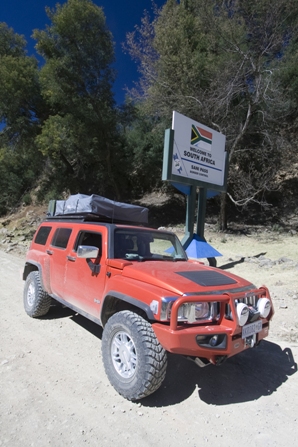 This is where the guys at ARB, Warn, Yokahama and 4×4 Megaworld came into play. From our launching point in Port Elizabeth, South Africa, the Megaworld crew helped me prep the H3 with ARB bumpers, air compressor, roof rack and one of ARB’s Simpson tents. The front bumper received a 9500 Warn Winch and IPF auxiliary lights, and we mounted a Hi-lift jack and four jerry cans on the rack. Inside, we removed the rear seats to provide room for additional gear, including an ARB fridge/freeze and dual auxiliary Optima batteries. The batteries we set up a T-max battery isolator that allowed the Optimas to be charging while on the road and isolated them when the key was off. This is crucial and insured that I’d always have at least one charged battery. ARB also provided one of their recovery gear kits: recovery straps, winch line extender, snatch block, etc. Jim Jackson (at ARB) also put me in touch with Steve Talacki from Ex-Officio Clothing. Steve hooked me up with a box of Insect Shield (previously called Buzz-Off) Safari Shirts and pants with zip-off legs. I used the Insect Shield gear on a 2006 trek though the jungles of Venezuela… and it actually works. The Mozi’s will bite the hell out of exposed skin, but won’t land on your clothes.
This is where the guys at ARB, Warn, Yokahama and 4×4 Megaworld came into play. From our launching point in Port Elizabeth, South Africa, the Megaworld crew helped me prep the H3 with ARB bumpers, air compressor, roof rack and one of ARB’s Simpson tents. The front bumper received a 9500 Warn Winch and IPF auxiliary lights, and we mounted a Hi-lift jack and four jerry cans on the rack. Inside, we removed the rear seats to provide room for additional gear, including an ARB fridge/freeze and dual auxiliary Optima batteries. The batteries we set up a T-max battery isolator that allowed the Optimas to be charging while on the road and isolated them when the key was off. This is crucial and insured that I’d always have at least one charged battery. ARB also provided one of their recovery gear kits: recovery straps, winch line extender, snatch block, etc. Jim Jackson (at ARB) also put me in touch with Steve Talacki from Ex-Officio Clothing. Steve hooked me up with a box of Insect Shield (previously called Buzz-Off) Safari Shirts and pants with zip-off legs. I used the Insect Shield gear on a 2006 trek though the jungles of Venezuela… and it actually works. The Mozi’s will bite the hell out of exposed skin, but won’t land on your clothes.
The Baja 1000 trek also assured me that the H3’s factory suspension and shocks were tough enough for almost anything, and would hold up to thousands of kilometers of undulations, Kalahari rollers and the chuckhole-ridden tar roads of Zambia, so no modification was necessary. The last piece of key equipment: a Garmin GPS and the Tracks 4 Africa (T4A) software (don’t go into the bush without this. It was literally a lifesaver in the Kalahari…read on).
Stay tuned in the next few days for more on Chris’s HUMMER H3 Adventure to Africa!
 Hummer Guy Hummer News and Opinion from an experienced off-road instructor
Hummer Guy Hummer News and Opinion from an experienced off-road instructor
